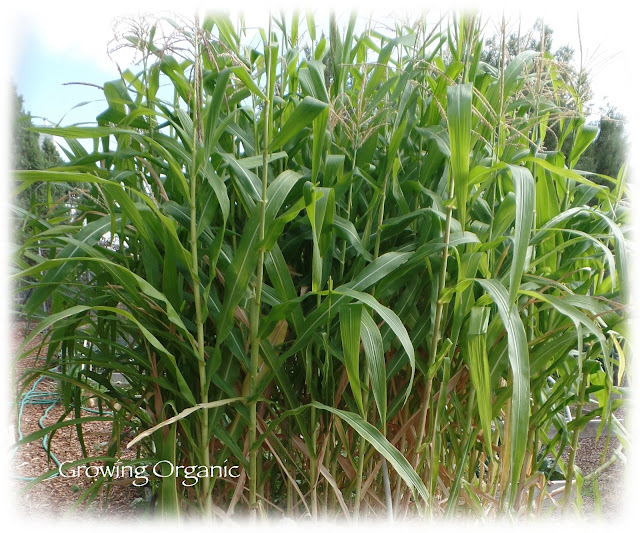Cultural practices are important to successful organic gardening. Sometimes we are our own worst enemy, creating both pest and disease problems because of bad cultural practices. We may not even be aware we are the source of the problem. If you plant the same crop in the same spot in the garden every year you are asking for trouble. Crop rotation will not only reduce the risk of pests and disease but will result in healthy soil and better harvests.
Crop rotation deals with rotational plans that encourage healthy soil. Just as weeds and plants in nature follow a natural succession it is wise to rotate the planting of your crops instead of planting the same crop in the same garden spot each year.
Benefits of Crop Rotation
- Maintains and improves soil fertility
- Prevents build up of soil borne diseases that have a narrow host range and overwinter in soil. Crop rotation can decrease the inoculum build up in the soil. By introducing a crop that is not a host it cannot reproduce, gradually dies, and over time inoculum levels are reduced.
- Prevents build up of pests that are relatively immobile, feed on one crop, and overwinter in the soil. Insects it helps to manage are wire worm, cutworms, corn root worms and white grubs.
- Improves the physical, chemical, and biological composition of the soil. Alternating plants with taproots and those with fibers roots will improve soil structure especially in a no till system.
- Helps establish diverse soil microbes and soil tilth
With so many benefits it is essential to develop and rotation plan for your garden. There are a couple of options you can consider when rotating crops.
Feeding Habits
This sequence divides garden crops according to feeding habits or nutritional needs. Heavy feeders require fresh compost and plenty of nitrogen. At the other end of the spectrum light feeders are satisfied with a mature compost and don't need extra fertilizing.
Heavy Feeders: cauliflower, broccoli cabbage, lettuce, Swiss chard, spinach, celery leeks, corn, cucumber, squash, tomatoes, eggplant, and peppers. Includes leaf crops and nightshades.
Soil Builders: Includes nitrogen fixing legumes of peas and beans. If the roots of these crops are left in the soil they add organic matter and some nitrogen.
Light Feeders: Mostly root crops like carrots, beets. parsnips, rutabaga, turnips, onions.
This method involves a 3 stage rotation that can be completed in 3 years or done within one growing season as you go from cool to warm season crops.
Stage I: Heavy feeders are planted in beds freshly fertilized with a compost.
Stage II: After they are harvested, follow with soil building legumes. Legumes build soil structure and add some nitrogen back to the soil.
Stage III: Following this light feeders are planted with a very mature compost added.
Add A Cover Crop Rotation: A fourth stage or cover crops can be planted in late summer or early fall which will winter kill and be incorporated into the soil to add organic matter.
Rotate According to Plant Families
A different approach would be to begin with leaf crops which are heavy feeders, followed by seed and fruit crops include legumes in this, and finally root crops. This rotation is nice in my area because the leaf crops do well in early spring and are replaced by warm season seed and fruit crops and then finally fall root crops are planted.
Rules To Consider:
Do not plant or follow planting with members of the same family. For example if you plant potatoes do not follow them with tomatoes. Both are in the night shade family. Plants in the same family have the same nutritional needs, pest, and disease issues.
Families of Vegetable Crops
Monocots
Grasses include all grain staples and corn |
| This is a flour corn Bloody Butcher |
 |
| Burgundy Amaranth |
The lily family includes onions, garlic, leeks, chives, and asparagus. Leeks and asparagus are heavy feeders. This family can take cold weather.
Dicots
Mustard or Cross Bearers (Cruciferae)
Named because the petals are arranged in a cross. They are cold hardy, heavy feeders, and require plenty of moisture.
Cabbage, kale, collards, cauliflower, broccoli, Brussels sprouts, kohlrabi, turnips, and rutabagas or swedes are in this family. Asian greens are also in this family including pac choi, mizuna, and mustards.
 |
| Savoy Cabbage |
 |
| Lacinato Kale |
Peas or the Butterfly-flower Family (leguminasae)
Includes all beans, peas, lentils, peanuts, chickpeas, and vetch which is used as a cover crop
The Carrot Family (umxbelliferae)
These plants possess slender hollow stems with lacy leaves and branching flowers or umbels.
Plants in this family includes carrots, parsnips, parsley, celeriac or celery root, turnip, fennel, dill, celery, chervil, coriander, anise, caraway, and angelica.
 |
| Celery |
The Goosefoot Family (Chenopodiacea)
This family provides both leaf and root crops including beets, Swiss chard, sugar beets, spinach, and orach.
 |
| Fordhook Chard |
 |
| Cardinal Swiss Chard |
The Nightshade Family (Solanaceae)
Includes warm loving crops like tomatoes, eggplant, peppers, ground cherries, tomatillos, and potatoes. They are heavy feeders.
The Gourd family (cucurbitaceae)
Plants in this family prefer warmth, moisture, and rich soil. Gourds, melons, cucumbers, pumpkins, and watermelon are in this family.
The Composite Family or Sunflower family
This family includes food, flowers, and medicines. Lettuces, endive, sunflowers, dahlias, Jerusalem artichoke, artichoke, cardoon, chamomile, yarrow, tarragon, wormwood, marigold and many others.










